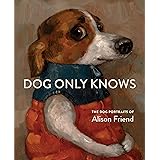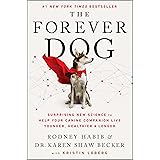It is often said that companionship can bloom in the most unexpected of places, defying conventional wisdom and natural predispositions. One might recall a story of a dog befriending a duck, or perhaps a mouse sharing a meal with a cat in a rare moment of truce. Such narratives often captivate our imagination, prompting reflection on the nuanced complexities of the animal kingdom.
This very phenomenon is remarkably showcased in the video above, which portrays an extraordinary cat and parrot relationship that has been described as nothing short of unbelievable. The visual account offers a compelling glimpse into a unique interaction, where a parrot appears to operate with a remarkable degree of cooperation and understanding, seemingly in response to its feline companion’s subtle cues. This intriguing display prompts a deeper exploration into the fascinating world of interspecies bonds and the surprising depths of animal intelligence.
Understanding the Cat and Parrot Dynamic: Atypical Interspecies Bonds
Typically, the natural order positions cats and parrots in a predator-prey dynamic, a relationship largely driven by instinctual behaviors. Cats, being natural hunters, possess a strong prey drive, while parrots, as birds, are inherently cautious and often perceive felines as a significant threat. Consequently, the formation of a harmonious cat and parrot relationship is generally considered an exceptional occurrence.
However, as is frequently observed in domestic settings, these ingrained instincts can be mitigated or even transcended under specific conditions. When animals are raised together from a young age, or when careful introductions are facilitated in a controlled environment, an entirely different dynamic is often established. A foundation of familiarity and trust is gradually built, allowing for the development of an unusual pet friendship that defies typical expectations.
The Cognitive Foundations of Animal Coexistence
The remarkable ability of distinct species to form deep interspecies bonds speaks volumes about their cognitive capabilities and emotional capacities. It is often hypothesized that factors such as mutual curiosity, a lack of perceived threat, and even a form of rudimentary empathy contribute to these unique relationships. Animals, much like humans, are capable of recognizing and responding to social cues from others, irrespective of species boundaries.
Furthermore, the domestic environment itself plays a crucial role. The provision of ample resources, a sense of security, and the absence of competition for survival allow for the expression of behaviors not always evident in the wild. In such a setting, the focus shifts from pure survival to social interaction, paving the way for intricate and often heartwarming alliances, such as a cat and parrot relationship.
Decoding Animal Communication and “Training”
The idea of a cat “training” a parrot to be its personal assistant might initially seem anthropomorphic, yet it points to complex forms of animal communication and behavioral adaptation. It is unlikely that a cat actively employs human-style training methods; rather, the “training” observed is more accurately interpreted through the lens of operant conditioning and observational learning. The parrot, being a highly intelligent and observant creature, is known to pick up on patterns and associate specific actions with desired outcomes, or even the avoidance of undesirable ones.
For example, a cat’s repeated action, perhaps a specific gaze or a vocalization, might be consistently followed by a parrot’s response, such as moving an object or alerting the cat to something. If the parrot’s action then leads to a positive reinforcement for the parrot (e.g., attention, a treat from a human, or even the cat’s contented presence), that behavior is likely to be repeated. This reciprocal learning, even without explicit verbal commands, illustrates a sophisticated interplay of actions and reactions within a cat and parrot relationship.
The Remarkable Cognitive Prowess of Cats and Parrots
Both cats and parrots are revered for their impressive cognitive abilities. Cats are known for their problem-solving skills, memory, and capacity for observational learning. They are adept at navigating complex environments and understanding cause-and-effect relationships.
Parrots, on the other hand, are celebrated for their mimicry, vocal learning, and impressive intellectual capacity, often compared to that of a human toddler. Species like African Greys have even demonstrated an understanding of concepts like object permanence and numerical sequencing. When two such intelligent species form a bond, the potential for complex interactions and learned behaviors, as depicted in the video, becomes a compelling testament to their animal intelligence.
Fostering Unique Pet Companionship in Multi-Pet Households
For those inspired by such unusual pairings and considering a multi-pet household, particularly involving exotic pets, a cautious and informed approach is paramount. The safety and well-being of all animals must be prioritized above all else. Gradual introductions, supervised interactions, and the provision of separate safe spaces are crucial steps in fostering any pet companionship.
Owners are encouraged to observe pet behavior diligently for any signs of stress, aggression, or discomfort. Patience is a virtue in these scenarios, as building trust and establishing a harmonious environment takes time and consistent effort. The ultimate goal is to create a living situation where each animal feels secure and respected, allowing for the organic development of bonds, however unconventional they may seem, like an intricate cat and parrot relationship.









